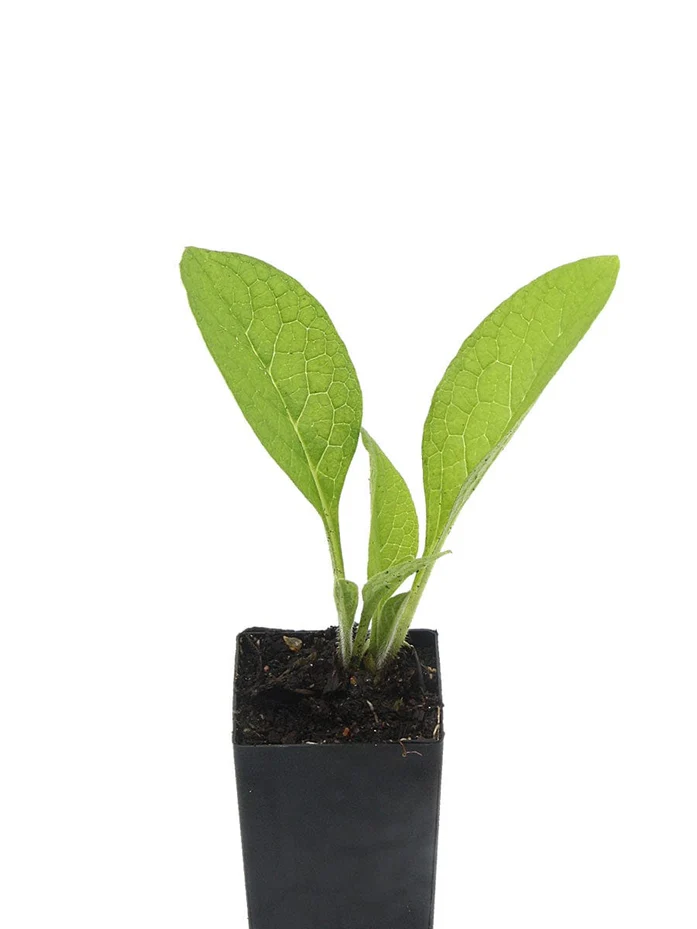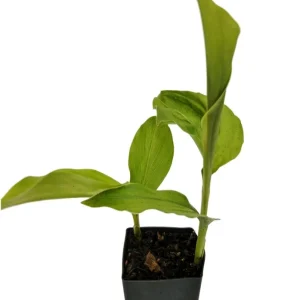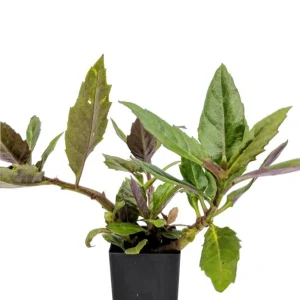Description
Comfrey is a versatile and valuable perennial herb known for its numerous benefits in gardening, medicine, and culinary applications. This hardy plant is a must-have for any garden enthusiast, prepper, or those interested in sustainable living.
Usually available: All year
Life cycle: Herbaceous Perennial
Height: 60 – 90cm
Position: Sun / part shade
Soil preference: Moist / well drained
Garden Use
Medicinal Use
Comfrey has been used for centuries in traditional medicine for its healing properties. The leaves and roots contain allantoin, a compound known to promote cell proliferation and aid in wound healing. Comfrey has been used topically to treat bruises, sprains, and fractures. However, it is important to note that comfrey should not be consumed internally due to the presence of pyrrolizidine alkaloids, which can cause liver damage.
Culinary Use
While comfrey is not commonly used in modern cuisine, it has been used historically as a vegetable and herbal tea. The young leaves can be cooked and used similarly to spinach, providing a good source of protein, vitamin C, and other nutrients.
Traditional Uses
In many cultures, comfrey has been valued for its various uses. It has been used as a fodder crop for livestock, as it is high in protein and can be harvested multiple times throughout the growing season. Comfrey has also been used in the production of natural dyes and as a compost activator.
Growing Conditions and Climate
Comfrey is well-suited to the diverse climates found in Australia. It prefers moist, well-drained soil and can tolerate partial shade to full sun. Comfrey is drought-resistant and can survive in areas with low rainfall. In Australia, comfrey grows well in temperate regions and can even tolerate some frost.
Interesting Facts and Gardening Tips
- Comfrey can be propagated easily from root cuttings, making it a cost-effective addition to any garden.
- The flowers of comfrey are attractive to pollinators, such as bees and butterflies, making it a valuable plant for supporting local ecosystems.
- Comfrey can be harvested multiple times throughout the growing season, providing a consistent supply of nutrient-rich leaves for mulch or fertilizer.
Complimentary Plants
Comfrey is an excellent companion plant for many crops, including:
- Fruit trees and shrubs
- Vegetables, such as tomatoes, potatoes, and cucumbers
- Herbs, like basil and parsley
- Nitrogen-fixing plants, such as peas and beans
Scientific Studies
Several studies have investigated the medicinal properties of comfrey. A 2013 study published in the Journal of Inflammation Research found that comfrey root extract has significant anti-inflammatory and analgesic properties, supporting its traditional use in treating joint pain and inflammation.





Reviews
There are no reviews yet.